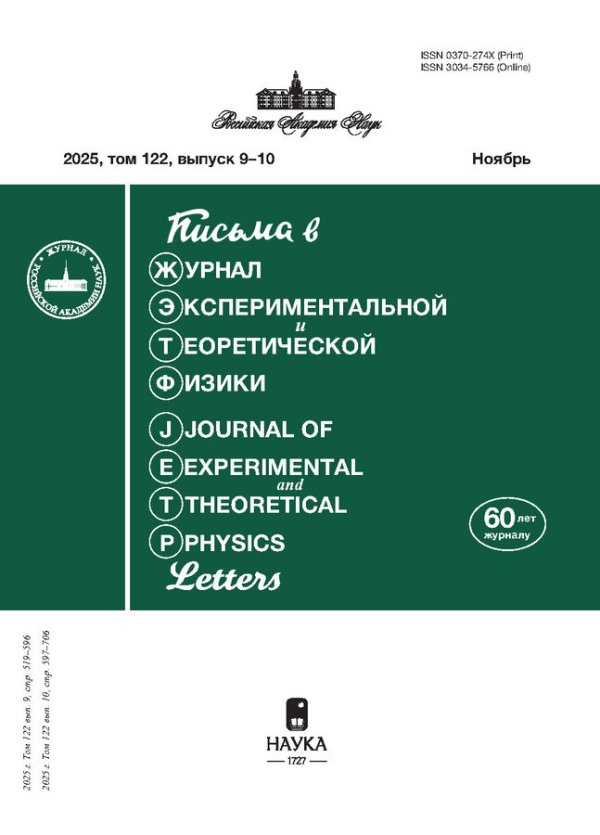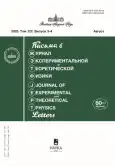Analysis of astrophysical 30Si(n,γ)31Si reaction via the asymptotic normalization coefficient method
- Authors: Kilic A.I1,2
-
Affiliations:
- TÜBİTAK Research Institute for Fundamental Sciences, Baris Mahallesi, Dr. Zeki Acar Caddesi
- Department of Physics, Eskisehir Osmangazi University, Meşelik Campus
- Issue: Vol 122, No 3-4 (2025)
- Pages: 133-135
- Section: Articles
- URL: https://vestnik.nvsu.ru/0370-274X/article/view/693453
- DOI: https://doi.org/10.31857/S0370274X25080018
- EDN: https://elibrary.ru/RQDUSM
- ID: 693453
Cite item
Abstract
This study investigates the 30Si(n,γ)31Si astrophysical reaction using the Asymptotic Normalization Coefficient (ANC) method. The squared neutron asymptotic normalization coefficients (ANCs), for the virtual decay 31Si → 30Si + n are extracted by reanalyzing the existing angular distributions of the 30Si(d,p)31Si reaction at 12.5 MeV. Both the Distorted Wave Born Approximation (DWBA) and Adiabatic Distorted Wave Approximation (ADWA) models are applied to refine the analysis. The results show improved ANC values compared to previous DWBA calculations. The squared neutron asymptotic normalization coefficient (ANC), for the ground state is found to be 32.49 ± 6 fm−1 with DWBA and 31.45 ± 6 fm−1 with ADWA. Additionally, the direct capture (DC) reaction rate was calculated and compared with previous work. The results show good agreement with the literature, with minor deviations at higher temperatures, highlighting the importance of the DC process in the 30Si(n,γ)31Si reaction. This work emphasizes the crucial role of neutron capture reactions in the formation of the weak s-process component in stars and provides new insights into reaction rates and cross-sections.
About the authors
A. I Kilic
TÜBİTAK Research Institute for Fundamental Sciences, Baris Mahallesi, Dr. Zeki Acar Caddesi; Department of Physics, Eskisehir Osmangazi University, Meşelik Campus
Author for correspondence.
Email: aliihsankilic@gmail.com
Gebze, Kocaeli, Turkey; Eskisehir, Turkey
References
- S. E. Woosley and T. A. Weaver, The Astrophysical Journal Supplement Series 101, 181 (1995).
- M. Pignatari, R. Gallino, M. Heil, M. Wiescher, F. Kappeler, F. Herwig, and S. Bisterzo, Astrophys. J. 710, 1557 (2010); doi: 10.1088/0004-637X/710/2/1557.
- R. C. Pardo, R. G. Couch, and W. D. Arnett, Astrophys. J. 191, 711 (1974); doi: 10.1086/152953.
- S. Palmerini, M. Busso, D. Vescovi, R. Trippella, S. Cristallo, and L. Piersanti, Astrophys. J. 921(1), 7 (2021).
- L. R. Nittler and F. Ciesla, Annu. Rev. Astron. Astrophys. 54, 53 (2016).
- E. Zinner, L. R. Nittler, and R. Gallino, A. I. Karakas, M. A. Lugaro, O. Straniero, and J. C. Lattanzio, Astrophys. J. 650(1), 350 (2006).
- K. H. Guber, P. E. Koehler, H. Derrien, J. R. Laverne, T. Rauscher, and A. A. Sonzogni, Phys. Rev. C 67, 062802 (2003); DOI: https://doi.org/10.1103/PhysRevC.67.062802.
- S. Piskof, J. Novak, E. ˇSimeˇckov´а, J. Ceipek, V. Kroha, J. Dobes, and P. Navratil, Nucl. Phys. A 662, 112 (2000); DOI: https://doi.org/10.1016/S0375-9474(99)00425-X.
- G. R. Satchler, Direct Nuclear Reactions, International Series of Monographs on Physics, Clarendon Press, Oxford (1983).
- A. J. Koning and J. P. Delaroche, Nucl. Phys. A 713, 231 (2003); DOI: https://doi.org/10.1016/S0375-9474(02)01321-0.
- R. L. Varner, W. J. Thompson, T. L. McAbee, E. J. Ludwig, and T. B. Clegg, Phys. Rep. 201(2), 57 (1991); DOI: https://doi.org/10.1016/0370-1573(91)90039-O.
- A. M. Mukhamedzhanov, C. A. Gagliardi, and R. E. Tribble, Phys. Rev. C 63, 024612 (2001); DOI: https://doi.org/10.1103/PhysRevC.63.024612.
- A. M. Mukhamedzhanov, V. Burjan, M. Gulino, Z. Hons, V. Kroha, M. McCleskey, J. Mrazek, N. Nguyen, F. M. Nunes, S. Piskor, S. Romano, M. L. Sergi, C. Spitaleri, and R. E. Tribble, Phys. Rev. C 84, 024616 (2011).
- H. Beer, P. V. Sedyshev, W. Rochow, T. Rauscher, and P. Mohr, Nucl. Phys. A 709(1-4), 453 (2002); DOI: https://doi.org/10.1016/S0375-9474(02)01030-8.
Supplementary files








